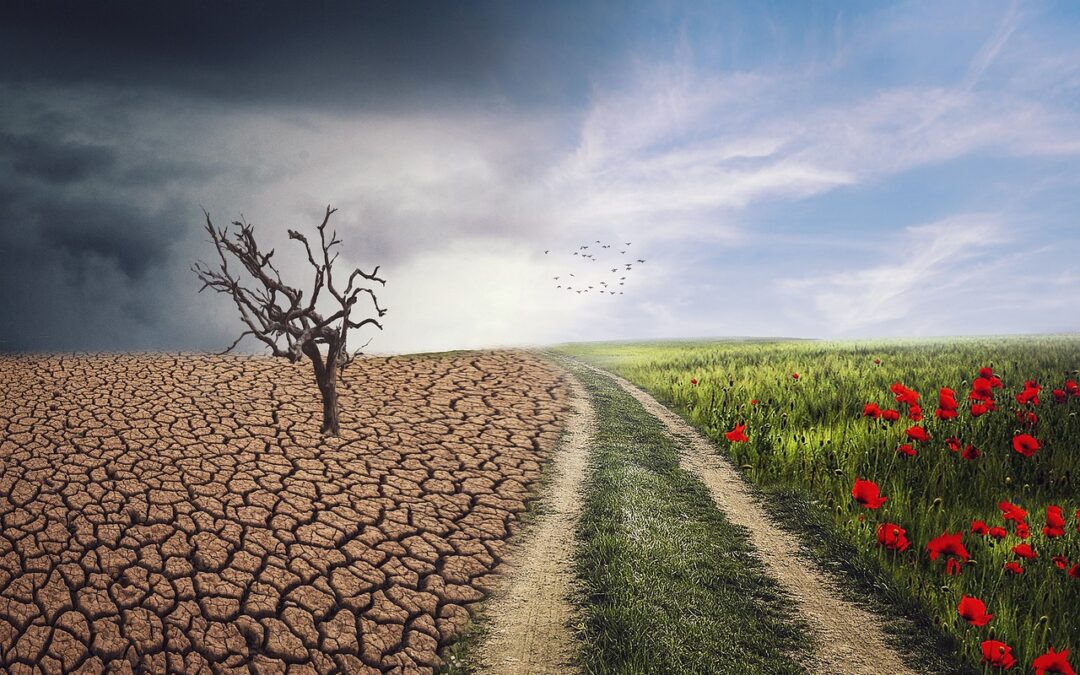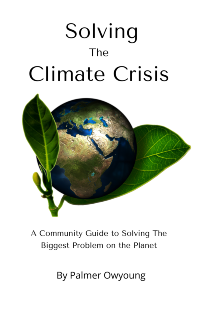If you have been paying attention to the news, you know we need to figure out how to solve climate change and we are nowhere near where we need to be to stay below 1.5 C of warming. A recent study revealed that the snow from the Himalayas is melting faster than predicted, and if we allow this to continue, it will cause irreversible damage.
The bad news is we are currently on the path to hit 3 C of warming by the end of the century, which would be catastrophic.
The good news is that just a decade ago we were on the path to 5 C warming, which would have been apocalyptic.
The changes occurred because of increased efficiency from technology, the move away from coal-powered energy and because scientists, activists and consumers, just like you, demanded change by voting with your dollars. If we continue to push, we can solve climate change.
1. Reduce Your Carbon Footprint
So, what are some things you can do to fight climate change? You’ve probably heard all the same things about reducing your carbon footprint- drive less, get an EV, eat less meat and dairy, fly less, switch to renewable electricity (if you are in the US you can switch here), and buy a heat pump (see if your building qualifies with zero upfront costs).
You can also replace your gas stove with an electric one, or buy an Instant Pot or electric induction burners, which are cheaper. Gas stoves burn natural gas and leak methane, a greenhouse gas that is 20 times stronger than CO2. 80% of these leaks come from the connection between the canister and the hose, so they happen regardless if you are cooking or not. When you are cooking with natural gas, it releases volatile organic compounds that can cause respiratory problems such as asthma and decreased lung function in both children and adults.
Use soap nuts. These can replace dish soap, laundry detergent, hand soap, and cleaning products. They are cheap, sustainably grown, and best of all, they are palm oil-free. Palm oil plantations are one of the major contributing causes to the deforestation of tropical forests, which are a carbon sink, and one of the most biodiverse places on the planet.
Divest from fossil fuels and switch banks if yours lends to oil companies. Between 2016 and 2020, the 60 biggest commercial banks lent 3.8 trillion dollars to the fossil fuel industry. If you bank at one of them, you can divest your savings, investments, and checking accounts away from them and move them into one that is divesting from fossil fuels. CNBC has compiled a list of both types. Aspiration is a bank that not only doesn’t invest in fossil fuels but helps reforest the planet.
Individual Versus Systemic Change
Some people say that changing individual behavior won’t be enough to solve climate change. It is systemic change of governments and corporations that we really need. While this is true, governments are made up of individuals who we put into office by people voting. Just like businesses are comprised of individuals, and are sensitive to consumer demand, which is driven by public awareness.
Besides, changes in an individual’s behavior never happen in isolation because of emotional contagion. According to social scientists Christakis and Fowler, we affect each other by 3 degrees of influence. Which means your behavior affects other people. So if you make a change, your friends may change, their friends might change and their friends might change. One study says that it only takes about 25% of a population to turn a social movement into a social norm and this is how society changes.
So individual changes can lead to changes within your community and eventually to systemic change.
2. Lobby for Systemic Change
You can also lobby for systemic change as well. But how do you do that if you don’t have deep pockets and political influence? Simple vote, but don’t just vote in national elections, your local elections might be even more important because the average voter turnout in local elections is only 15%. In some major cities like Dallas, Fort Worth, and Las Vegas, they are only in the single digits. This means that your vote has more sway in a local election than it does in a national one. Studies also show that 70% of climate mitigation is taking place at the local level.
Effective Altruism and GivingGreen.Earth
The problem is that we only vote every few years, but you can vote with your wallet every day. So another way to lobby for change is to donate to GivingGreen.Earth
The non-profit uses a method called effective altruism, which fuses charitable giving with social science, physical evidence, and econometrics to answer the question of where donating a dollar eliminates the most CO2?
The conclusion that GivingGreen came to was that giving to organizations that affect climate policy is much more effective than giving to charities that are trying to remove CO2 from the atmosphere. It’s about 10 times more effective to change policies than it is to do carbon removal.
The Clean Air Task Force
One of the non-profits that GivingGreen.Earth recommends is the Clean Air Task Force which focuses on fighting climate change by changing laws and supporting technologies that can build a clean energy system. A study by the Founders Pledge, a non-profit that advocates solving global problems through charitable giving, they found that the Clean Air Task Force could eliminate approximately 1 metric ton of CO2 for between 12 cents and $1. By comparison, most organizations can’t avert a metric ton for less than $2. Direct air carbon capture companies like Climeworks, currently charge about $1,000 dollars per ton.
The Citizens Climate Lobby
Another way to help change climate policy is by supporting The Citizens Climate Lobby. This group lobbies for a law called “Fee and Dividend,” which taxes the fossil fuel industry for its pollution while offsetting the costs to the public by sending out dividend checks.
You can use tools on their website to call, tweet, petition, or email your congressional representatives to demand a carbon tax and dividend.
You can also donate to them, or join a local chapter worldwide and take part in talks and direct action.
Support Indigenous Rights
Don’t buy carbon offsets instead, support indigenous rights. Carbon offsets are when you are asked to check a little box when booking a flight that asks if you want to offset your CO2 emissions by planting trees.
Most carbon offset schemes don’t work and cause more damage than good. The trees rarely survive for more than five years. If they do, they are on a monoculture plantation that lacks biodiversity. There have also been issues with indigenous people being thrown off their land or native forests being cut down in favor of tree-planting schemes.
Carbon offsets are just greenwashing and they allow corporations to continue using fossil fuels while claiming they are carbon neutral. The best way to prevent deforestation and biodiversity loss is to support the fight for Indigenous rights. These groups protect the land and where they live, studies show biodiversity thrives. Instead of buying carbon offsets, donate to the Pachamama Alliance.
3. Create Change within Your Community
The area you can probably be most impactful in is your own community. There are probably already volunteer opportunities you can find via your school or Facebook. Otherwise, you can start your own with a group of like-minded people at work or school, to start a recycling program, start a composting program, start a local garden, or switch to renewable energy. If you are a business or organization, you can also work with GivingGreen.Earth to raise funds for non-profits.
4. Extend Your Carbon Shadow
You have heard of a carbon footprint, but you may not have heard of a carbon shadow. Your carbon footprint is the amount of CO2 you emit. Your carbon shadow is how you inspire others to reduce their emissions by your behavior or by giving them different choices.
So, one way you could increase your carbon shadow is to start a blog or write for a local newspaper about how to fight pollution and live more sustainability.
You could also start a business related to reducing emissions. For example, you could start a plant-based food company, which gives consumers options other than meat and dairy. They project the global vegan food market will grow from $26.16 billion in 2021 to $61.35 billion in 2028 at a CAGR of 12.95% in the forecast period, 2021-2028.
You could also start a business that sells sustainable pet food, or one that encourages people to replace their gas heaters and air conditioners with heat pumps like BlocPower.io.
5. Use Nudges
Nobody likes to be lectured or coerced into changing their behaviors. So economist Richard Thaler came up with the idea of nudges, which is a way to encourage a behavior change using non-coercive means. For example, to encourage people to save more, they made enrolling into a company’s 401K plan the default setting and saw savings rates triple.
You can take similar tactics if you are a parent, or if you run a school cafeteria. For example, if you want your kids to eat more healthy plant-based foods, put the food at eye level and make it easier to get to. Put the junk food and the meat and dairy products in the back of the fridge and cupboards.
If you are a business owner and you have a 401K plan for your employees, you can make the default setting for fossil fuel-free investments (FossilFreeFunds.org).
If you get creative, there are dozens of ways you can use nudges to influence the people around you to live more sustainably without getting into an argument.
Fighting climate change needs to be a multi-faceted approach. It is a lifestyle change, but it doesn’t mean you have to make enormous sacrifices, take a lot of time, or spend a lot of money to do it. In fact, it is a healthier, more sustainable way of living that will cost you less, make you happier, and is better for the planet.


